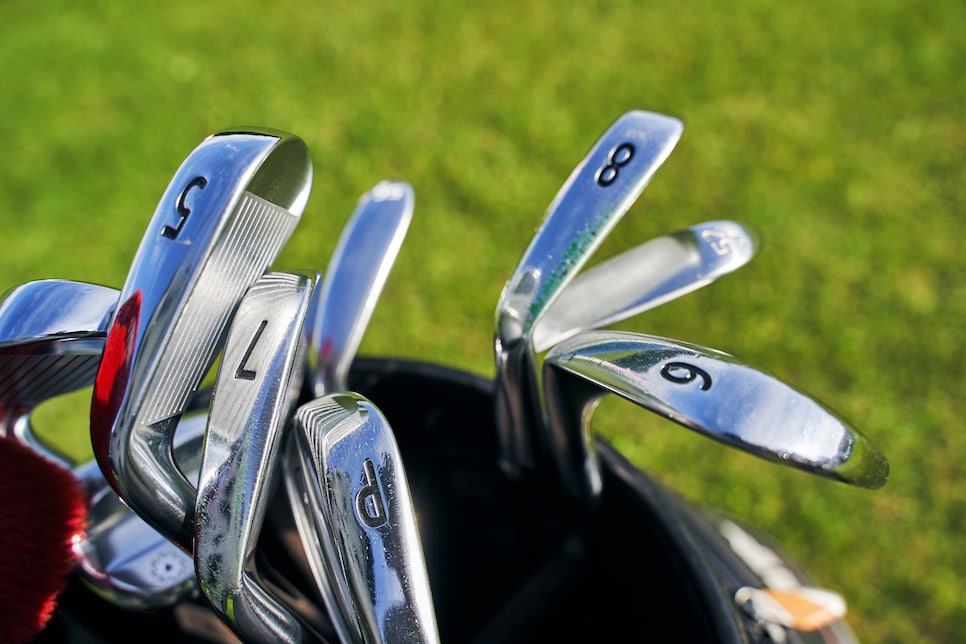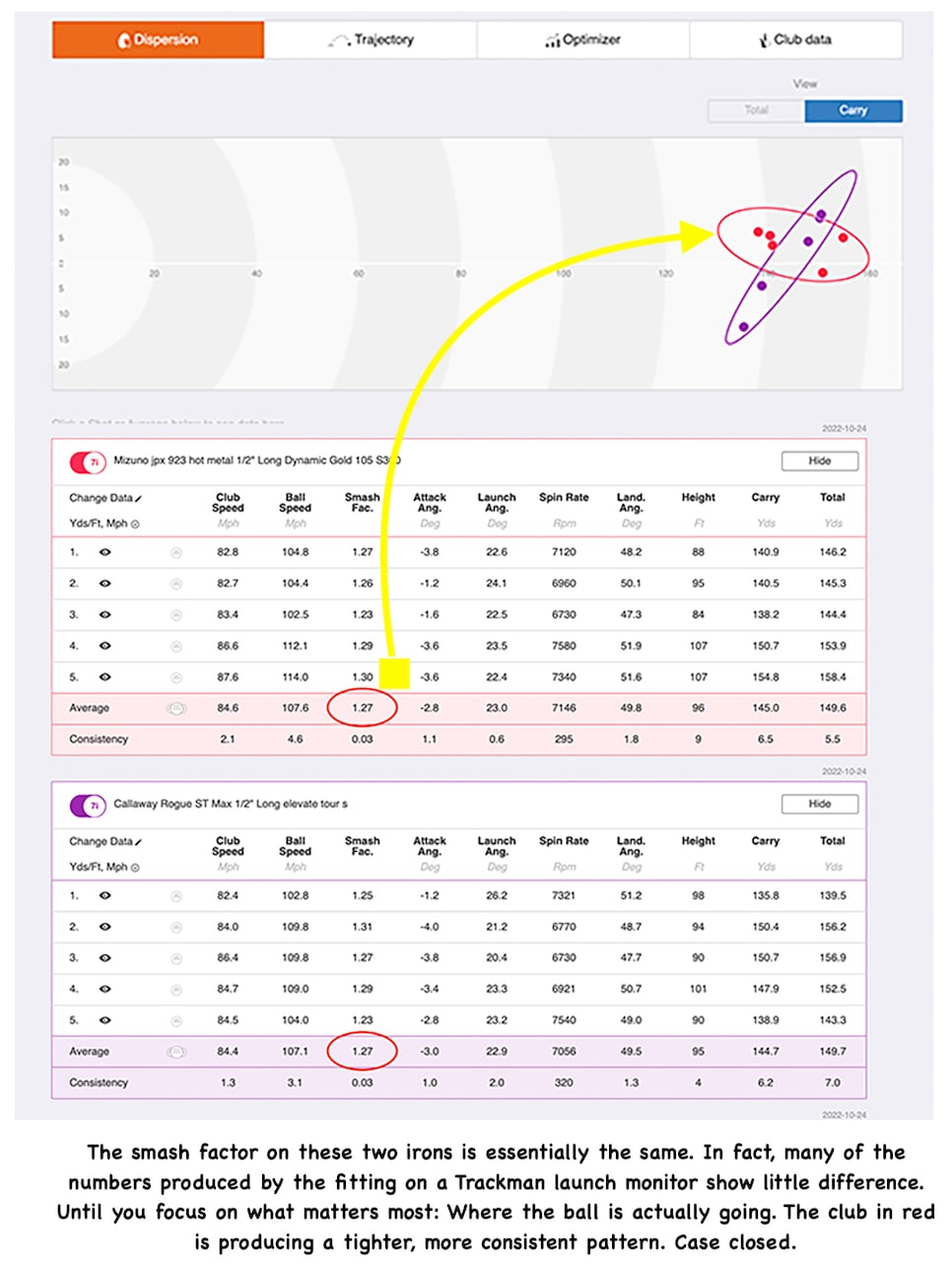[PHOTO: spxChrome]
Smash factor is one of those terms like all-you-can-eat buffet. It sounds like it means something. And it does. But just not what you think, and not nearly as important as it’s slightly ostentatious name might lead you to believe.
This is particularly true when it comes to understanding which irons are the best for your game.
First, a brief tutorial. In the simplest terms, smash factor is the ratio of ball speed (the speed of the ball immediately after impact) to swing speed. You will notice on a launch monitor that it is recorded as a number like 1.48 or 1.32 or 1.27. Specifically, smash factor is a way of understanding how efficiently you’re transferring the energy of your swing into the ball, how solidly you’re making contact.

Smash factor gets a lot of consideration in drivers. First, in a driver fitting the variables of loft and shaft weight and shaft length aren’t always so different. Generally, with the right driver, you’re trying to produce a smash factor in the high 1.4s. Theoretically, the best number you can produce is 1.5. Fitters often look at smash factor as confirmation that a player is making consistent contact, that the shaft and head combination is ideal.
The clubs you’ll buy next year are being played on tour right now

“I don’t put a lot of stock in smash factor with irons,” he said. “I will simply lean on more important ball data numbers, such as landing angle, height, distance, and direction. The true goal, and I can’t stress this enough, is to drop shots in buckets to tighten up dispersion first and foremost, and then chase distance last. I’m a firm believer if we can help the customer find the centre of the face consistently and compliment their swing with the correct centre of gravity and loft in a particular iron, distance and smash factor happens simply as a by-product.”
An iron that has a high smash factor may be the result of a very strong loft. Some 7-irons have 27.5 degrees of loft and some have 32, for example. Both of those irons could be struck well but if a player isn’t able to launch shots off that lower-loft club properly, it will produce a lower ball flight that won’t be able to hold a green. In short, other parameters matter much more than smash factor.

Now, one way that smash factor may be helpful is as a measure of how consistent your impact is with a particular iron and shaft combination. If the smash factors for eight or 10 shots with a particular 7-iron are in the 1.35 area and aren’t varying by more .02, that’s a sign you are consistently delivering the club.
“For an iron fitting, I will almost always at least glance at the smash factor because it can be an indicator of ‘performance’,” said Craig Allan, director of the Golf Performance Centre at Sea Island in Georgia, a 100 Best Clubfitter. “By that I mean it is a fairly good indicator on how well a head/shaft combination may be working for someone based on their specific club delivery tendencies. This is especially true when you have narrowed it down to one head. It can help separate a couple of shafts performing similarly. But with irons, since we are focusing on a high level of control, there are definitely more important factors like launch angle, spin rate, total height, landing angle, dispersion in all directions, consistency, to name a few.”
Bottom line: smash factor sounds a lot more powerful than it is when it comes to your irons. Instead, make sure the iron you’re most excited by isn’t the one that has a high smash factor, but one that’s producing the most meaningful distance and the most consistent direction, with a landing angle that’s going to keep your approach shots close to the target. That would be, in a word, smashing.



